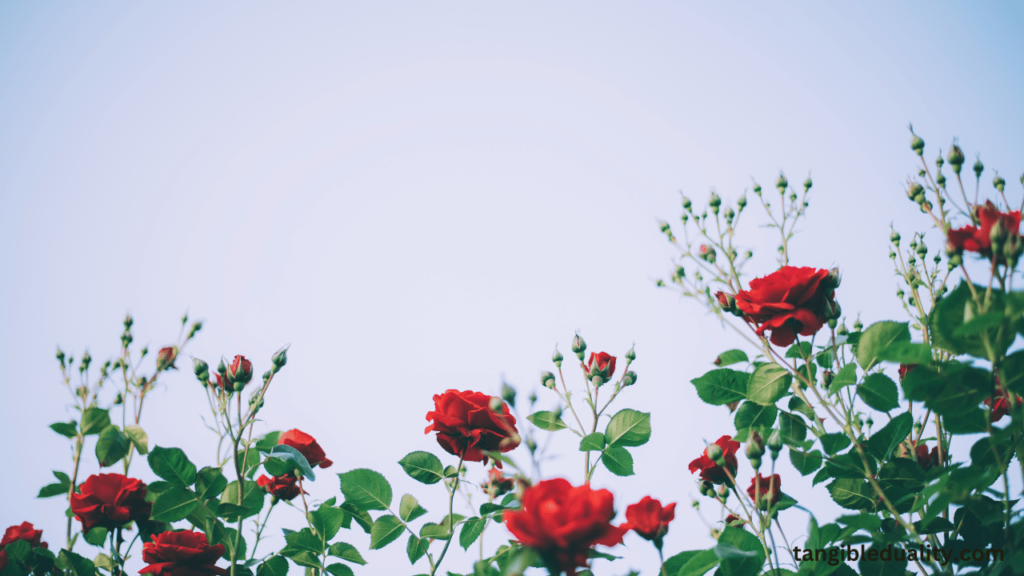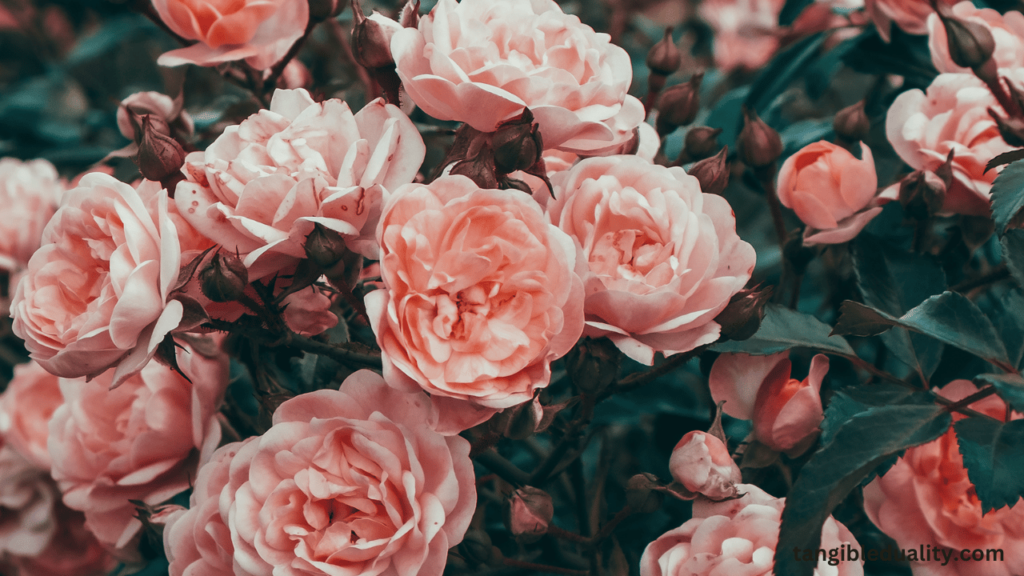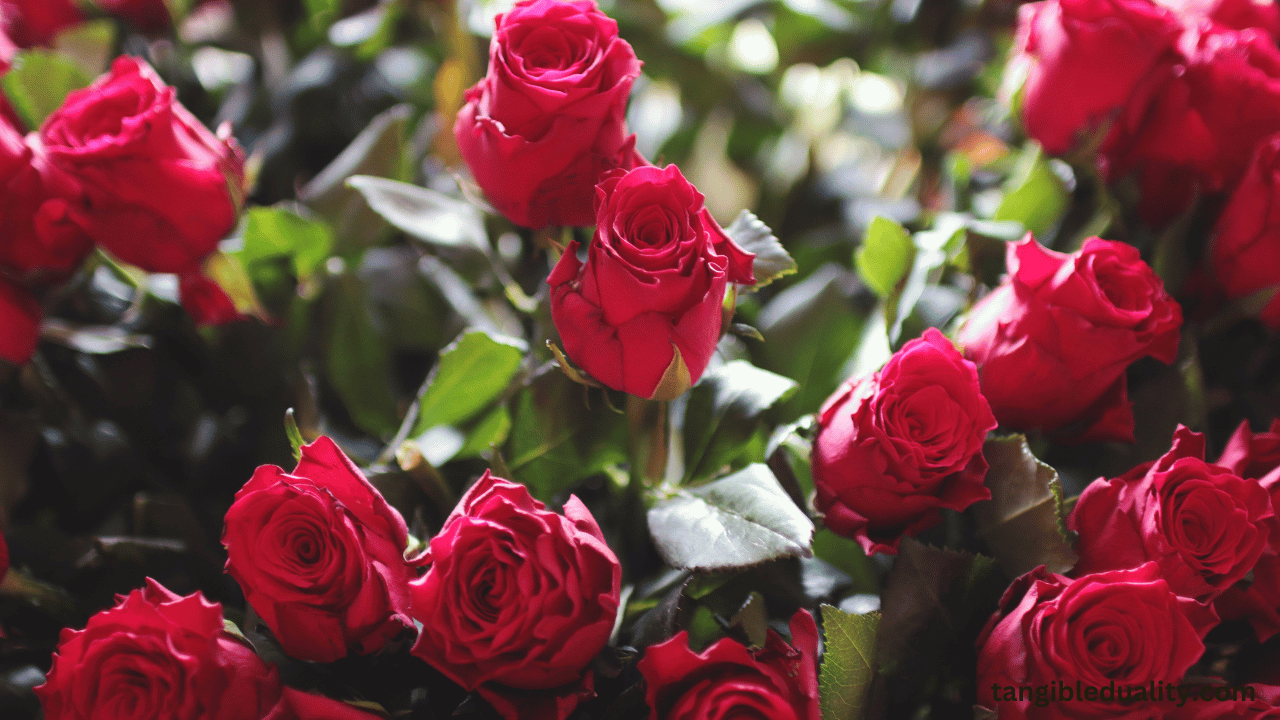The selection of the appropriate combination of plants is a critical step in developing a beautiful and vibrant garden. Many gardeners frequently ponder whether different plant types are compatible with one another.
One of the most frequently asked questions is whether it is appropriate to plant roses in close proximity to butterfly plants. Although both of these plants are highly regarded for their aesthetic attributes, is it possible for them to cohabit peacefully?
The purpose of this article is to investigate the qualities of roses and butterfly bushes, as well as to investigate the ways in which these two types of plants might complement one another in a garden environment.

Characteristics of Butterfly Bushes and Roses
Roses are
The alluring grace and seductive aroma of roses have earned them a well-deserved reputation. Since the beginning of time, gardeners have appreciated roses because of the wide variety of colors, styles, and sizes that they come in. In order to determine whether or not roses are compatible with other plants in your Garden, it is essential to have a solid understanding of their characteristics:
Characteristics of the Growth Patterns of the Various Rose Varieties
- Hybrid Tea Roses are well-known for their standard single blooms that are arranged on long stems, which makes them an excellent choice for cutting.
- Floribunda roses are characterized by their clusters of tiny flowers, which are plentiful and result in a spectacular display of color.
- Cultivating climbing roses, which are versatile and can be trained to grow on trellises, walls, or fences, can add vertical flair to your Garden.
- Roses on a Shrub: These roses are resistant to disease and hardy, and they grow into bushy shrubs that are covered in clusters of flowers.
What Roses Need in Terms of Sunlight and Soil For Growth
Roses require at least six hours of consistent exposure to direct sunlight on a daily basis in order to flourish. A soil that is rich in organic matter and has good drainage is perfect for roses since it promotes the growth of healthy roots.
The following are the ideal climatic conditions for growing roses
The majority of rose varietals may thrive in areas that are temperate and have moderate rainfall. When looking for specific rose kinds that are ideal for your climate, it is best to consult local gardening resources.
Advice on Roses Regarding Their Maintenance and Pruning
- The practice of pruning on a regular basis stimulates healthy growth and a generous amount of blooms.
- Ensure that there is adequate ventilation around the plant in order to reduce the likelihood of fungal illnesses.

Bushes that are Butterfly-like
Butterfly bushes, which are often referred to as Buddleia, are cherished for the beautiful and peaceful way in which they attract butterflies and other pollinators. The abundance of vibrant and fragrant flowers that these bushes produce has the potential to turn any garden into a sanctuary for various kinds of wildlife. The following are essential properties of butterfly bushes:
Essential Characteristics of Butterfly Bushes
Long, thin spikes of fragrant flowers in a variety of colors, ranging from pink and purple to white and yellow, are the distinguishing characteristics of butterfly bushes.
A wide range of pollinators, particularly butterflies, are drawn to the flowers because they contain a high concentration of nectar.
The shrubs can grow to a height of six to ten feet or even more. Their growth pattern is arching. Specific Preferences of Butterfly Bushes Regarding Soil and Light: Butterfly bushes prefer soil that drains well and has a pH level that ranges from slightly alkaline to neutral. Full sun is perfect for these plants, although they can also survive in a little bit of shade.
Climate Conditions That Are Appropriate for the Growth of Butterfly Bushes
Certain types of butterfly bushes may have various degrees of cold tolerance, but they are hardy in USDA zones 5-9. If you live in a colder climate, you need to take precautions to protect yourself from winter harm.
Observations Regarding the Pruning and Maintenance of Butterfly Bushes
The early springtime pruning of butterfly bushes encourages healthy growth and boosts the production of additional flowers.
It is possible to encourage ongoing flowering throughout the season by performing regular deadheading of spent blooms.
Advantages of planting butterfly bushes and roses together
The color palette of roses and butterfly bushes is complementary because they offer a wide range of colors that can be harmoniously combined to create a visually stunning garden:
The Numerous hues of Roses and Their Influence on the Garden Roses are available in a wide range of hues, including red, pink, yellow, white, and even multicolored blooms, which enables an infinite number of design possibilities to be created.
This article will discuss how the vibrant colors of butterfly bushes can enhance the visual appeal of roses. By strategically planting butterfly bushes near roses, you can create a stunning contrast or a complementing color scheme, which will enhance the overall visual effect of your Garden.
Some striking color combinations that you should consider
One visually pleasing combination is coral-colored roses with lavender butterfly bushes, and another is yellow roses with deep purple-flowered variants of butterfly bushes.
Pollinator Attraction Roses and butterfly bushes both have the extraordinary capacity to attract pollinators, which makes them valuable complements to any garden ecosystem: roses attract more butterflies than butterfly bushes do.
Pollinators, which include bees, butterflies, and other insects, play an essential part in the Garden’s ecosystem. They reproduce plants, which in turn ensures the production of their fruits and seeds.
Both roses and butterfly bushes can attract pollinators. Roses generate blossoms that are rich in nectar, which attracts pollinators. On the other hand, butterflies provide an enormous supply of nectar, which attracts butterflies, bees, and hummingbirds.
Environment suitable for a wide variety of pollinators
Planting roses and butterfly bushes together can create an atmosphere that is pollinator-friendly. This will encourage a wide variety of helpful insects to visit your Garden.
Extended flowering Period: Both roses and butterfly bushes have instead extended flowering periods, which allows them to provide constant beauty throughout the growing season:
The length of time that roses and butterfly bushes bloom varies from variety to variety. Roses can bloom from the beginning of spring to the end of fall, depending on the array.
It is common for butterfly bushes to begin flowering in the early summer and to continue producing blooms until the first frost.
The Benefits of Having a Flowering Season That Lasts for Longer in the Garden:
If you allow your Garden to bloom for a more extended period, it will continue to be vivid and colorful, providing enjoyment to both you and the people who come to visit it.
TGardenoming period of your roses and butterfly bushes by planting them together
In order to make the most of the blooming period for roses and butterfly bushes alike, it is crucial to perform frequent deadheading of spent blooms and to provide the appropriate care, which includes providing sufficient amounts of water, sunlight, and nutrients.
The following are some of the things that should be taken into consideration when planting roses and butterfly plants in close proximity to one another:
Developmental Patterns and Spacing
Certain types of roses, such as climbers and shrubs, have the potential to get quite huge and require sufficient room to spread out. Because of their arching growth pattern and the fact that they can reach a substantial height, butterfly bushes require adequate spacing to achieve their full potential.
It is essential to leave appropriate space between plants to avoid overcrowding and potential competition for nutrients. This not only eliminates overcrowding but also ensures that each plant has access to the nutrients it needs to grow healthy.
Creating a Balanced Planting Arrangement to Ensure Healthy Growth You may produce a balanced composition by carefully organizing the placing of roses and butterfly bushes. This will allow you to take into consideration the growth habits, sizes, and spacing requirements of each plant.
A Preference for the Soil and the Sunlight
The evaluation of the soil type and pH levels that are suitable for both plants:
While butterfly bushes grow in well-drained soil with a pH that ranges from slightly alkaline to neutral, roses prefer soil that is slightly acidic and slightly alkaline. Carry out a soil test to ascertain the characteristics of the soil, and if it is deemed essential, consider amending the soil to fulfill the requirements of both plants.
Roses must be exposed to full sun for a minimum of six hours per day, while butterfly bushes may handle some shadow but prefer full sun.
It is essential to consider the sunshine conditions in the region where you intend to plant to guarantee that each plant receives the ideal lighting circumstances.
Making Adjustments to the Soil and Light Conditions in Order to Create an Optimal Environment If the soil is not suitable for either of the plants, enriching it with organic matter or constructing raised beds can help create a more favorable environment.
If the area does not offer sufficient direct sunshine, you might want to consider pruning neighboring trees or selecting another planting spot.
Managing Infectious Diseases and Pests
There are a number of common diseases and pests that can affect butterfly bushes and roses.
Roses are susceptible to diseases such as black spots, powdery mildew, and rust, while butterfly bushes are subject to powdery mildew and spider mite infestations.
It is essential to become familiar with the typical diseases and pests that afflict each plant and then design appropriate preventative measures for each plant.
Potential Interactions Between Plant Species and the Transmission of Diseases Due to the near closeness of roses and butterfly bushes, it is essential to be aware of the possibility of disease transmission between these two plant species.
In addition to maintaining proper hygiene habits, such as removing unhealthy leaves on a regular basis, you should also consider utilizing organic or chemical treatments when they are required.
When it comes to implementing preventative measures and natural methods of pest control:
In your Garden, gardening tries to attract helpful insects like ladybugs and lacewings, which are able to consume aphids.
Your plants should be inspected on a regular basis, any signs of disease or pests should be removed as soon as possible, and any recommended organic or chemical interventions should be followed if necessary.
Conclusion
It is possible to create a beautiful and harmonious addition to any garden by planting a butterfly bush next to a rose bush, for example
. The creation of a magnificent landscape that features a symphony of colors and a haven for pollinators may be accomplished by first gaining an awareness of the peculiarities of both plants, then utilizing their distinct beauty, and finally taking into consideration the criteria that are necessary for their successful coexistence.
Remember to pay attention to the spacing between plants, the conditions of the soil, and the prevention of diseases to guarantee the health and vitality of both plant species. Your Garden has the potential to grow with an attractive combination of roses and butterfly bushes if you take the time to plan Gardenintain it properly.
This combination will captivate the senses and provide you with unending pleasure for many years to come.
FAQs
1: How often should I water my plants?
Answer: The watering frequency for plants depends on various factors such as plant species, weather conditions, soil type, and container size. As a general guideline, it’s recommended to water deeply and infrequently, allowing the top inch of soil to dry out between waterings.
2: What is the best time of day to water plants?
Answer: It’s generally best to water plants early in the morning or late in the afternoon. This allows the plants to absorb the water before the heat of the day evaporates it. Watering in the evening can promote fungal diseases by keeping the leaves wet overnight.
3: How should I fertilize my garden?
Answer: Fertilization methods vary depending on the type of plants and soil conditions. Before applying fertilizer, it’s crucial to test the soil to determine its nutrient deficiencies. Choose a fertilizer formulation that matches the needs of your plants, and follow the recommended application rates and schedule.
4: How can I prevent pests and diseases in my garden?
Answer: To minimize pest and disease issues, practice good garden hygiene by removing weeds, fallen leaves, and garden debris regularly. Encourage beneficial insects and birds, as they can help control pests. Additionally, rotate crops, use organic pest control methods, and ensure proper air circulation to prevent fungal diseases.
5: How do I prepare my garden for winter?
Answer: Preparing your garden for winter involves several tasks. Trim back perennials, remove annuals, and clean up plant debris to avoid overwintering pests and diseases. Mulch around perennial plants to provide insulation, protect root systems, and prevent frost heaving. Consider covering vulnerable plants or using protective structures to shield them from harsh weather conditions.

